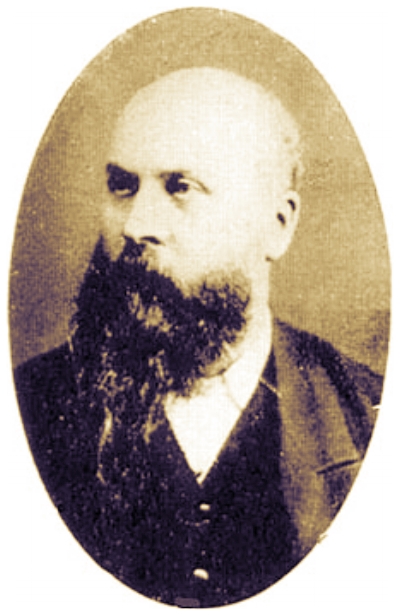David Lee
(1837–1897)
David Lee, organist and conductor, was born on 20 March 1837 at Armagh, Ireland, son of James Lee, professor of music, and his wife Mary, née Scarlet.
At 4 he entered the Armagh Cathedral School, at 7 became a chorister and at 12 was made deputy-organist of Armagh Cathedral. On leaving school he joined the Provincial Bank of Ireland as a clerk.
Lee arrived at Melbourne in the Morning Light on 26 July 1864. He was soon appointed organist of St Luke's Church, Emerald Hill (South Melbourne), and opened its new organ in March 1865. He also founded the Emerald Hill Philharmonic Society. At various times he was organist at the Independent Church, Collins Street, where he led the choir for eight years, and at other churches in suburban Melbourne including St Stephen's Church, Richmond, St Andrew’s Church, Brighton and St Mark's Church, Fitzroy.
He opened organs in many city and suburban churches, notably St Patrick's Cathedral on 14 March 1880 and Chalmers Presbyterian Church, East Melbourne, on 30 April 1885. He was honorary organist of the Melbourne Philharmonic Society in 1866. In accord with the policy of choosing a choral rather than an orchestral conductor, Lee was appointed conductor from 1867 to 1874, when he visited America and Europe, and in 1877-88. He also taught music.
In 1867 he joined the organist, Samuel Kaye, and set up a business importing pianos, harmoniums and organs. In 1875 the organ builder, Robert Mackenzie, joined the firm and his factory was attached to Lee & Kaye's premises at 17 Collins Street. Three years later George Fincham bought the firm.
In October 1866 Lee played the organ at the inaugural ceremony of the Melbourne International Exhibition, with C.E. Horsley conducting. On 10 August 1872 he opened the new Melbourne Town Hall Grand Organ.
In 1877 Lee was appointed as the first City Organist of Melbourne by the City Council - this was the first City Organist appointment on the Australian mainland. For many years his twice-weekly recitals in the Town Hall drew large audiences. He was invited to give the opening recital on the new organ of the Adelaide Town Hall in October 1877. He visited Europe again in 1887.
Lee's influence in the Philharmonic Society was later described by George Peake who claimed that Lee's 'keen business instinct possibly affected his musical judgement, while his bonhomie and personal popularity probably disarmed criticism, much to his own disadvantage as a public musician. His musical enterprise appeared to be influenced by a desire to please the public and win popularity, rather than promote the educational and progressive advance of musical art'.
Lee's limitations as conductor of the society affected the musical life of Melbourne for many years; he was finally forced out of the society in 1888 after years of constant friction, especially because of his fruitless requests for payment of his salary.
On 23 April 1877 at Christ Church, St Kilda, he had married Mary Mackenzie, eldest daughter of Archibald Johnson of Toorak House. She predeceased him without issue.
Lee died of kidney disease at South Yarra on 12 May 1897 and was buried in the Anglican section of the Melbourne General Cemetery. Pall-bearers included the Mayor of Melbourne and other prominent Melburnians.
David Lee’s grave in the Melbourne General Cemetery was restored after a fundraising concert performed by Thomas Heywood in the Melbourne Town Hall in May 2015. The restored grave was unveiled in a public ceremony on Sunday 16 August 2015.
From an article by Sally O'Neill and Thérèse Radic in the Australian Dictionary of Biography, National Centre of Biography, Australian National University, http://adb.anu.edu.au.
